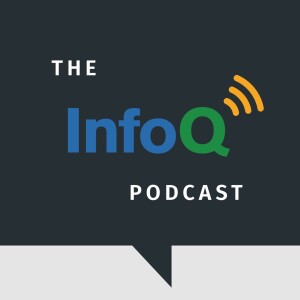
On this podcast, Pam Selle (an engineer for IOPipe who builds tooling for serverless observability) talks about the case for serverless and the challenges for developing observability solutions. Some of the things discussed on the podcast include tips for creating boundaries between serverless and non-serverless resources and how to think of distributed tracing in serverless environments.
Why listen to this podcast:
- Cocoa was able to see a productivity gain of 29% by adopting serverless (as measured by the amount of time spent on business productivity applications).
- Tooling for serverless is often a challenge because resources are ephemeral. To address the ephemeral nature of serverless, you need to think about what information you will need to log ahead of time.
- Monitoring should focus on events important to the business.
- Build barriers between serverless and flat scaling non-serverless resources to prevent issues. Queues are an example of ways to protect flat scaling resources.
- In-memory caches are a handy way to help serverless functions scale when fronting databases.
- There are limitations with tracing and profiling on serverless. Several external products are available to help.
- Serverless (and Microservices) are not for every solution. If you are choosing between two things, and one of them lets you ship and the other does not choose the thing that lets you ship.
More on this: Quick scan our curated show notes on InfoQ https://bit.ly/2Jc6FXc
You can also subscribe to the InfoQ newsletter to receive weekly updates on the hottest topics from professional software development. https://bit.ly/2Jc6FXc
Subscribe: www.youtube.com/infoq
Like InfoQ on Facebook: bit.ly/2jmlyG8
Follow on Twitter: twitter.com/InfoQ
Follow on LinkedIn: www.linkedin.com/company/infoq
Check the landing page on InfoQ: https://bit.ly/2Jc6FXc
view more
More Episodes
AI, ML, and Data Engineering Trends in 2024
 2024-08-14
2024-08-14
 2024-08-14
2024-08-14
Architecture Modernization with Nick Tune
 2024-05-27
2024-05-27
 2024-05-27
2024-05-27
012345678910111213141516171819
Create your
podcast in
minutes
- Full-featured podcast site
- Unlimited storage and bandwidth
- Comprehensive podcast stats
- Distribute to Apple Podcasts, Spotify, and more
- Make money with your podcast
It is Free
- Privacy Policy
- Cookie Policy
- Terms of Use
- Consent Preferences
- Copyright © 2015-2024 Podbean.com






